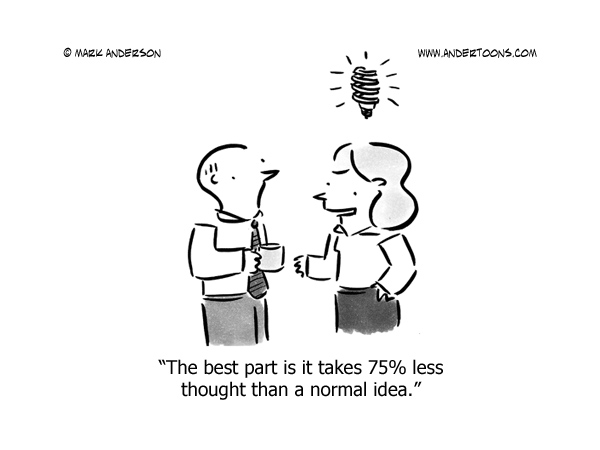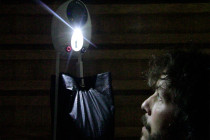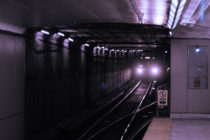Regardless of any controversy surrounding free energy, there’s one thing we can agree on: Alternative energy sources exist all around us. Solar, geothermal, wind, tidal or biogas—there are many incredible options beyond non-renewable fossil fuels and, realistically, our survival depends on harnessing these sources of energy in order to live more sustainable lives. Here are three fascinating sources of alternative energy that will get you thinking differently about the big potential that naturally exists in our backyards—near and far.
1. Solar Wind. You’ve heard of solar power and you’ve heard of wind power, but what on earth is solar wind? Well, first of all, it isn’t. Solar wind refers to a stream of energized, charged particles flowing outward from the sun, deep in space. The energy produced by solar wind is estimated to be one hundred billion times more than humanity’s current power needs. Brooks Harrop, a Physicist at Washington State University, and Dirk Schulze-Makuch of Washington State’s School of Earth and Environmental Science are developing the Dyson-Harrop satellite in the hopes that it can be used to capture these particles and divert energy to Earth. The satellite uses a long copper wire that is charged using onboard batteries to create a magnetic field, which in turn ensnares electrons from solar wind. Energy produced by these electrons would be delivered to Earth via an infrared laser beam.
The team is still working out some major technical issues; most importantly, how to protect the satellite and laser from space debris, as well as how to ensure limited loss of energy and maximal directional accuracy for the laser beam, which has to travel millions of kilometers in space. Initial trials of this technology will likely involve powering nearby space missions.
2. Much Ado About Number Two. It seems fitting that farmers would have the answer to the question of what to do when nature calls. For centuries, farmers have been using manure as fertilizer and more recently they have implemented devices—methane digesters—to more effectively harness the wonderful, if pungent, benefits of animal waste.
For example, the Brubaker family in Mount Joy, Pennsylvania runs a 750-cow dairy farm and has been putting number two to work since 2007. According to Mike Brubaker, the digester has made the farm “20 times better for the environment than it was before.” In addition to cow and chicken manure, the family is permitted to take food waste and other byproducts, such as leftover chocolate from the state’s candy industry, to produce high quality fertilizer that has more nitrogen and less phosphorus, which is important in the Chesapeake Bay area where high phosphorus levels are concerning.
Other applications include creating bedding for the cows made from digested solids that are dried out using water heated from hot air produced within the digester. For their farm alone, this has resulted in cost savings of $30, 000 a year and, interestingly, the bedding made from digested solids has a much lower pathogen count than the sawdust they were previously using. Neighbouring farms are also happily using the product, as it is a more affordable option compared to shavings and sawdust.
Another huge plus is the energy produced by the digester—an impressive 4 to 5 megawatts per day, which powers 150-200 homes, in addition to approximately 20% of the farm’s energy needs. According to Luke Brubaker, “The digester is one of the greatest opportunities that we’ve ever done.” The Brubakers’ next project will be the installation of solar panels on a new heifer barn. “Doing these projects is good for the future of the economy and the environment,” says Luke.
3. Good Vibrations. If you thought “Piezoelectric” was the name of a trendy Greek nightclub, you would be wrong—however—one of the most interesting applications of this phenomenon does indeed involve nightclubs. The Piezoelectric Effect is the ability of certain materials to generate an electric charge in response to applied mechanical stress. When piezoelectric material is placed under mechanical stress, the positive and negative charge centres in the material shift, resulting in an external electrical field. Pierre and Jacques Curie first identified this effect in 1880 using materials with crystalline structure like quartz and Rochelle salt. More recent applications seek to harness the power of kinetic motion particularly for surfaces that withstand a lot of pedestrian traffic or heavy footfall.
Electric Floors teamed up with partners Rinnic/Vaude Engineering and AEGROUP to produce high-quality energy flooring modules that can generate up to 30 watts per tile and can be linked with other renewable sources of energy to create a completely self-sustained energy system. One of the popular, and fantastically interactive, applications of this technology is the Sustainable Dance Floor. Ampere, a recently opened nightclub in Antwerp, Belgium, calls itself a sustainable dance club as it converts kinetic energy from people dancing to electric power, as well as reusing body heat to keep the venue warm.
While the above examples may not mean an end to our dependence on fossil fuels anytime soon, they do represent incredible progress being made in alternative energy sources. With continued focus and support, the future of sustainable energy gets closer every day.
About The Author

-
Serial Entrepreneur, Technologist and Inventor.
My objective is to develop useful products that have a net positive effect in the lives of those that use them and the environment that we live in.
CEO of Mission LED Lighting Company Ltd.
- 2017.05.24LED factsWhy Are Cars Switching to LEDs if They’re Too Bright?
- 2017.05.09Be green & saveHow to Easily Replace T8 Fluorescent Tubes With LED
- 2017.03.07Build a better future7 Things About Explosion Proof LED Lighting You Should Know
- 2017.02.28Be green & saveWhy We Love LED Grow Lights (And You Should, Too!)





Bennett Sosso
Fantastic web site. Lots of useful info here. I am sending it to a few friends ans also sharing in delicious. And naturally, thanks for your sweat!
ReplyJohn
Thank you for the kind words Bennet!
ReplyMosharof
Green power usually rfeers to programs run by your utility. When you sign up the utility agrees to buy clean/renewable energy in the amount that you use. My utility gets it’s green power from a combo of wind, solar, hydro and geothermal. I pay a little more, but I like the idea of supporting the increase in clean energy.
ReplyJohn Keirstead
So do we! Clean energy and energy-efficiency is what we strive for here! Thanks for commenting!
Reply